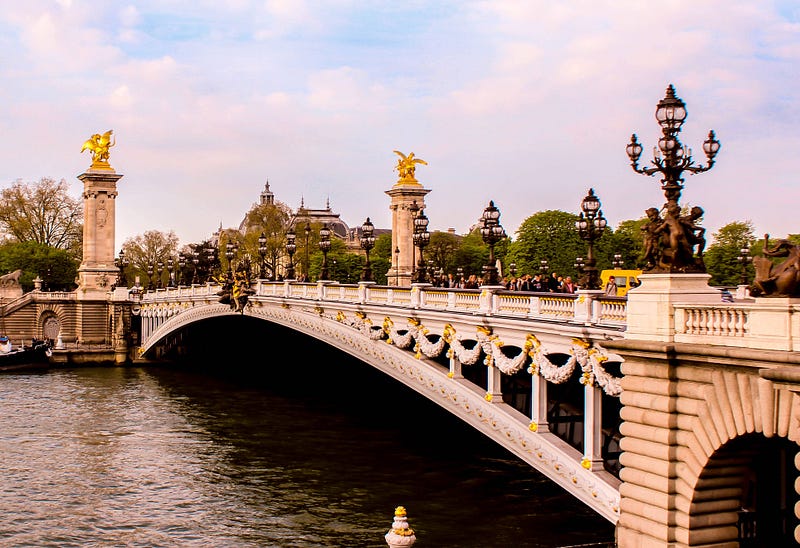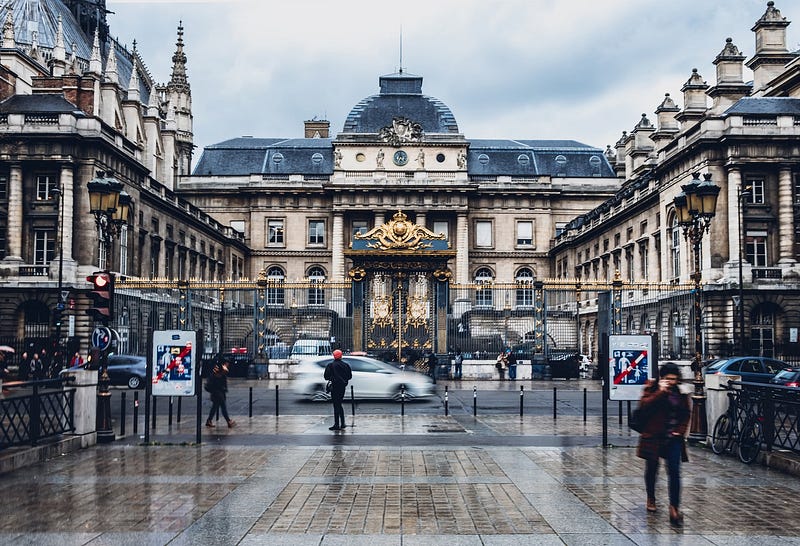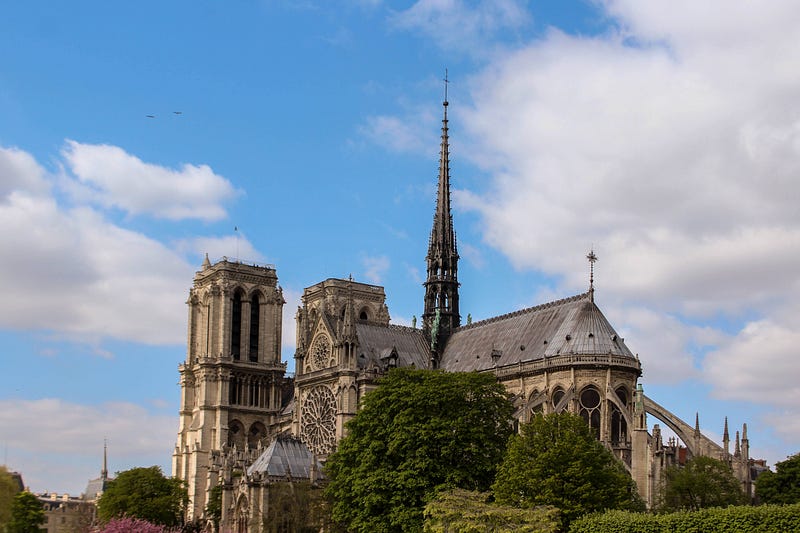Insanity Along the Seine River
My first trip to Paris and a walk around Île de la Cité — Part 1

This is not a typical “10 things to do in Paris” guide. Instead, I’d like to invite you to join me on my journey to Paris (as well as various other destinations) through my stories. This city is vast and teeming with abundant experiences waiting to be explored. It is impossible to fit it into 1000 words (which is my personal maximum word limit for a story). Hence, this story will span over many 1000-word stories. Here is the first part.
The one factor that consistently instills anxiety in me while in France is the French language. Please don’t get me wrong; French is unquestionably a beautiful language. Nevertheless, I tend to approach French with a significant level of deference.
French words often sound nothing like their written forms to English ears. I speak fluent German, and although Germans have a liking for combining smaller words to create lengthy compounds known as “Kompositas,” they typically write as they pronounce and pronounce as they write, but in the case of French, it appears they’re just as willing to spend their letters as they like to spend on their wines and fashion. Thus, as I arrived in Paris, this lingering apprehension about the French language weighed on my mind.
In the morning, I disembarked from the bus at Gare du Nord station, carrying my fear of the French language. I made my way to the ticket window to purchase a weekly pass. The lady behind the counter looked at me with a neutral expression and offered a “bonjour,” albeit without pronouncing the “u” and the “r.” In response, I greeted her with “Allemand or English?” as politely as possible (Allemand is German in French).
Given that I was in Paris, she must have been accustomed to such greetings from tourists. Without much delay, she handed me a form and explained something that resembled English but was not quite understandable. I completed the form, and she, in turn, provided me with a ticket that looked more like an ID card, complete with a photo.

For me, one of the most crucial aspects of traveling is immersing myself in the local culture. I firmly believe that culture is like a river, constantly flowing and changing its forms. Indeed, all the world’s cultures have their roots alongside rivers.
With this in mind, I had heard that walking is the optimal way to explore the heart of Paris, as many of its attractions align with Metro Line 1, making navigation straightforward. Consequently, I opted to walk along the Seine River.
The Seine River flows through the city, dividing it into right and left banks as it flows from east to west. At the heart of Paris, two islands serve as markers of its historical center. One of these islands, Île de la Cité, is home to the imposing Cathedral of Notre-Dame de Paris.
The cultural narrative of Paris found its origins on this very island, back when it was just a humble fishing settlement. Subsequently, the Romans took charge, followed by the introduction of Christianity.
While strolling along the picturesque banks of the Seine, my path led me to a charming bridge that took me directly to the enchanting Île de la Cité.
Commencing my exploration on this historical island, I started my journey at the Palais de la Cité, a regal residence that housed French monarchs from the 4th to the 16th century.

Within the castle’s courtyard lies a royal chapel known as Sainte Chapelle. This exquisite chapel is divided into two levels, one for the king’s household and another for the king, queen, and court.
Remarkably, the chapel’s walls are almost entirely comprised of intricate stained glass. During my visit, the radiant sunshine flooded in from all directions through these resplendent windows.
As I continued to wander, I found myself bathed in a kaleidoscope of blue, red, purple, golden, and pink hues, transporting me back to the medieval ages.
Within the hallowed walls of this chapel, every window narrates a biblical tale, each panel a vivid tableau of sacred narratives. Notably, some of these windows portray the compelling story of how Saint Louis, also known as King Louis IX, obtained the revered relic of the Crown of Thorns.
It is believed that this relic once adorned the head of Jesus himself and was acquired by King Louis in the 13th century. In addition to this cherished relic, he amassed an assortment of other holy relics, and Sainte Chapelle serves as the precious casket safeguarding these sacred treasures.
In my personal view, Sainte Chapelle stands as the most breathtaking example of Gothic architecture ever constructed when it comes to stained windows, color schemes, and art.

The square of the cathedral
It was precisely 4 o’clock in the evening, and the church bells extended their warm welcome. The ethereal sound of church bells possesses a meditative quality, even for someone of an agnostic person like myself.

Before Christianity’s advent in Paris, a Roman temple dedicated to Jupiter occupied this site. This pagan establishment still lies underneath the cathedral. Later, in the 4th century, another church was constructed on these grounds.
In 1160, Maurice de Sully, the first Bishop of France, made the bold decision to demolish the aging church and embark on the construction of the cathedral we now know as Notre Dame.
This cathedral is one of the earliest structures built in the Gothic style. The flying buttresses built in the 12th century still stand, supporting the thin walls of the cathedral with large tinted glass windows.
The construction of Notre Dame then went on for another 200 years. On the cathedral Fassade, there stands a statue of Saint-Denis, who served as a bishop in Paris during the 3rd century. Legend has it that he was beheaded by the Romans, yet he miraculously continued his ministry, clutching his head in his hand.

Above the main entrance of the cathedral, there is a portal depicting the Day of Judgment. According to Christian belief, God judges both the living and the dead. On the lower lintel, the dead rise from their graves, and angels sound trumpets.
These figures include a pope, a king, women, warriors, and an ordinary man. On the upper lintel, Archangel Michael weighs souls while two demons attempt to tip the scales. The chosen are led to paradise (on the right hand of Christ), while the damned, chained and terrified, are led by other demons to hell.
In the center, Jesus stands with both hands raised, serving as the dispenser of justice. At the highest level, you find kings, emperors, bishops, and knights, with common people among them. The message conveyed here is that, ultimately, everyone is equal before Jesus.
Below Jesus, an angel with a pure white soul is weighed on a scale, while a demon with a white soul tries to tip the balance. To His right, good people look joyfully toward Jesus, while to His left, the righteous also turn to Him. Walking into the cathedral, I resonated with that place's thousand years of art and cultural history.

Gargoyles stand sentinel, watching over Notre Dame, guarding this sanctuary of divinity. However, tragically, a few years later, I found myself at the Duomo Cathedral in Milan when I received the heart-wrenching news of the devastating fire that occurred at Notre Dame, taking down its spire that once rose against the sky. It felt like an uncanny coincidence.
As I watched a video of Parisians uniting to sing hymns outside the burning Notre Dame, it became evident that while fire may reduce the tangible relics of history to ashes, it cannot consume the spirit that resides within this epicenter of Western culture, art, and faith.
In the next part, we will walk from Île de la Cité to one of my favorite bookstores in Paris and then to Mont Matre — The highest point of Paris.
Thank you for reading my story.
